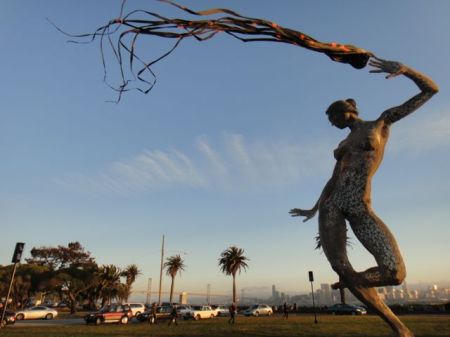Discussing gender equity in current times has evolved beyond the earlier arguments advanced by the ’70s feminist theories that were premised upon privileging the rights of one gender over another, which also meant that the team was split into winners and losers. Overall, this had the undesired effect of differentiating and further marginalizing women. The current discourse on gender claims to takes a slight departure from such positivist-leaning feminist theories to take an inclusive view and a constructive paradigm that seeks to empower all members of society. But is this actually the case? The few women who have managed to break through the proverbial glass ceiling in traditionally male dominated the Fortune 500 companies like Indra Nooyi at PepsiCo, Marissa Mayer at Yahoo, and Sheryl Sandberg at Facebook are seen as the wonder women incarnates; the women who can balance work and family perfectly, and have shown the rest of the world that they, too, can have it all. But even in the fact that such individuals are isolated on the grounds of their gender, their appearances, and their ability to raise children insinuates that in spite of having more than proved their worth in the workplace, society continues to focus on their womanhood, and not in terms of how such sensibilities might have helped the company’s performance, but just in terms of how they are viewed outside of work. Of course, these are non-representative sample of working women, or women at large, but it does raise the question of the role of gender in today’s tech-savvy society.
One significant observation from conducting fieldwork interviewing and observing disaster professionals across three countries, in over 50 interviews with people who held leadership positions in private, public, and community sector, the traditional leadership positions in the private and public sector were mostly held by men, while the ad-hoc leadership positions in community organizations (which were often uncompensated) were held by women. In this short précis, I present an alternate perspective of gender, in which equity is discussed in terms of a third model: design. Author of the book, Cradle to Cradle, McDonough has suggested that, “design is the first signal of human intention”, and in many ways, everything from how a city is designed, experienced, and lived in can reveal surprising insights about how accessible–and thus equal–it is to its diverse inhabitants.
A city’s capacity for equity becomes most transparent in times of crisis, especially in natural disasters such as earthquakes, floods, and hurricanes. Apart from stalling the day-to-day operations of a city’s infrastructure and social systems, disasters can also amplify the endemic societal issues, which lie dormant and hidden from the mainstream hitherto unquestioned.Where equity is not sufficiently present, however, it is usually the local community rise from the rubbles to respond to these issues bythemselves. These individuals are referred to as “emergent community leaders”, and often, are women. A Latin adage, nihil de nobis, sine nobis, (‘nothing about us, without us, [is for us])’ which is often employed by post-disaster community organizations reinforces an understanding that empowerment is obtained not by having problems solved by others on their behalf, but by being supported to tackle the wicked design problems as leaders and decision-makers.
A case in point, the February 2011 earthquake in Christchurch, New Zealand, became a catalyst for galvanising communities, and the overall improvement in social resilience, many of which were led by women, has been a valuable outcome of the disaster. Suburban communities that were marginalised in the early days went on to implement innovative design strategies. In Lyttelton, they had time banking, whereby the locals pooled all of their resources for time credits which they could then exchange amongst themselves for other resources as needed, and in Sumner they established community-led urban design groups which was considered so successful that similar initiatives spread in other suburbs. These communities, most remarkably led by women, demonstrated a strong sense of local identity and solidarity, enabling the Canterburians to bounce back more quickly compared to those who waited for actions from the top.
Disaster scholars acknowledge that communities with strong networks affect the ability of individuals to activate informal ties in disaster (Hurlbert et al., 2000), as was demonstrated in New Orleans after Hurricane Katrina (Aldrich and Crook, 2008), where “higher levels of social capital facilitate recovery and help survivors coordinate for more effective reconstruction” (Aldrich, 2012, p. 2). Knowing one’s neighbors, Aldrich argued, exceeded the benefits of governmental support and economic resources.
So, disaster can serve as a catalyst for renewing community spirit and resilience against future disasters, and, as illustrated above, design can be an equalizer that has potential to re-empower communities struggling to restore their sense of belonging and identity. Given the roaring success of such community-led initiatives that were led by women, is there a lesson there that we can learn about the feminine sensibilities that we can bring to build more resilient and sustainable community, before a major catastrophe strikes?
And this leaves me with another question: what drives women to emerge as leaders?
(A variation of this writing will be published at 2014 UIA Congress: Architecture Otherwhere, in a paper entitled: “Wicked Problems Framework: Architectural Lessons from Recent Urban Disasters)


